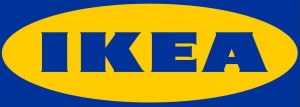While scrolling through a multitude of different blog posts written by my class-mates, this article caught my eye. Not just an interesting read, but the way that Heidi linked both marketing and ethics into the subject was creative and alluring, so I looked into finding out more. I had never been on the Ben and Jerry’s website however after reading this article I did a quick google search and sure enough their cover page is streaming with corporate social responsibility, ethics, and marketing. You can learn how they do business, get information on the ingredients used- not just how they affect you personally but how they have affected the lives of others around the world. This got me thinking back to the reading on the chief sustainability officer- and the three stages of sustainability.
Compliance:
– Although Ben and Jerrys have gone through a few court cases such as the “Schweddy Ball” incident (Polis, C) and the “All natural” removal (Fulton, A) they have managed to stay within the laws of the industry.
Efficiency:
– As Heidi mentioned in her blog post, since Ben and Jerrys vow to not go the GMO route, as well as establishing fair trade with all of its suppliers, they have ensured customer loyalty and a strong, ethical brand image that will allow for larger revenue streams in the long run.
Innovation
– Ben and Jerrys have quite recently aided in the development of social metrics aimed at measuring and reporting the social sustainability of a company (11.1.06) which will help the world markets in the long run. This type of behaviour will mean they gain from insider knowledge in the criteria which may give them a head start in terms of competing, as well as being a morally correct thing to invest in.





